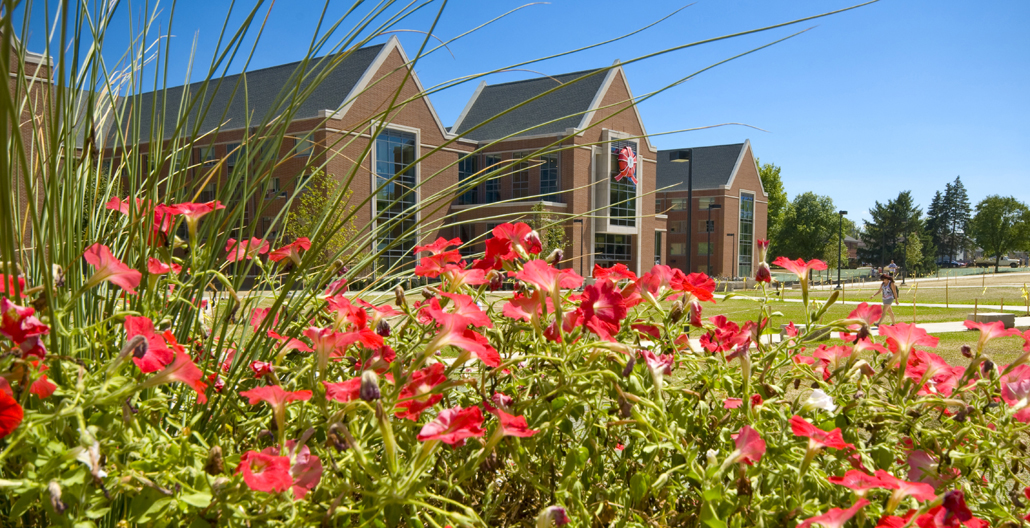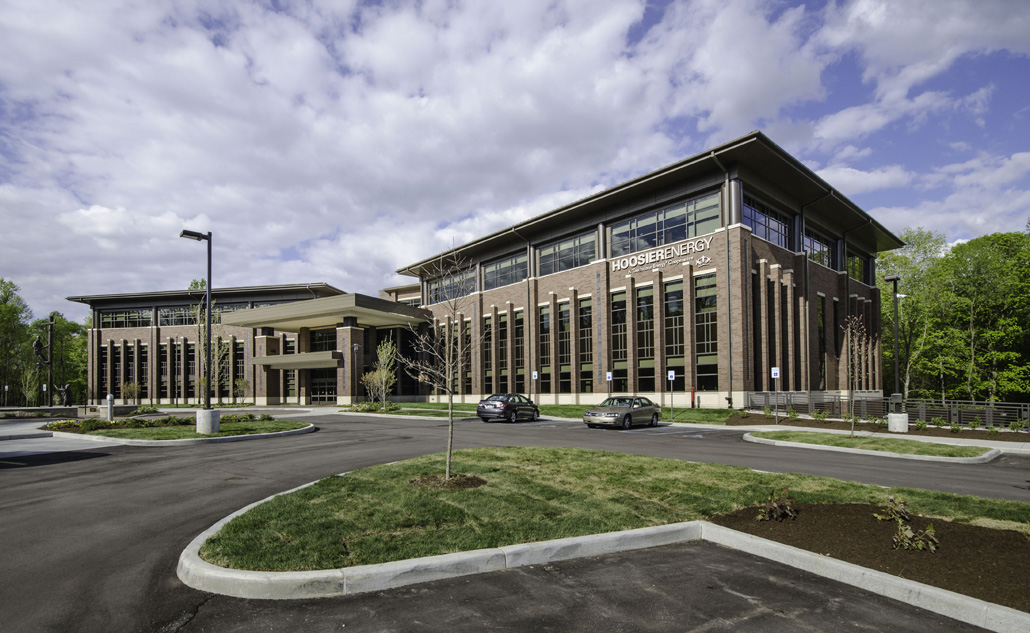Roof 101: Steep-Slope vs. Low-Slope Roofs
-
Category
Studio-Workplace, Studio-Lifestyle, Innovation -
Posted By
Tom Ning -
Posted On
Mar 19, 2021
Commercial roofs fall into two main categories: steep-slope and low-slope. Believe it or not, there is no such thing as a completely flat roof.
Steep-slope roofs can be covered with shingles, slate, or metal. Low-slope roofs are classified as built-up, single-ply membrane, or monolithic sprayed foam.
Pros and Cons of Steep-Slope and Low-Slope Roofs

Steep-slope Roof at DeHority Residence Hall – Ball State University
Steep-Slope: Pros
Most people are familiar with traditional steep-slope roofs because that’s what we commonly see on houses. Steep-slope roofs are relatively low maintenance. Debris rolls or slides off into the gutters, so you don’t have to worry about cleaning the roof, standing water, or relieving weight from accumulated debris. Steep-slope roofs also have a familiar, classic, and aesthetically pleasing look that compliments a variety of structures.
Steep-Slope: Cons
Steep-slopes have a few disadvantages. One important weakness is that they decrease utility space on the roof. On large commercial buildings, low-slopes allow large systems and equipment to live on top of the roof, hidden from ground view. This is a challenge or even impossible on a significantly sloped roof. Mounting heavy equipment or large objects on a steep-slope roof can create run-off blockage.
The most common problem arising from steep-slope roofs is clogged gutters that result from the run-off debris. This requires regular cleaning.


Low-slope Roof at Hoosier Energy Headquarters
Low-Slope: Pros
Perhaps most importantly, low-slope roofs provide buildings with essentially another floor. Hiding large mechanical equipment on a low-slope roof can free up space inside the building. Further, low-slopes allow for easy implementation of new technology, such as solar panels. They also make green roofing systems and rooftop gardens possible.
Low-slope roofs also require less material than steep-slope roofs, making them less expensive, more practical, and ideal for larger buildings.
Low-Slope: Cons
While low-slope roofs don’t present the challenge of clogged gutters, regular maintenance is required to ensure debris and water are regularly removed to prevent leaks and possible collapse.




